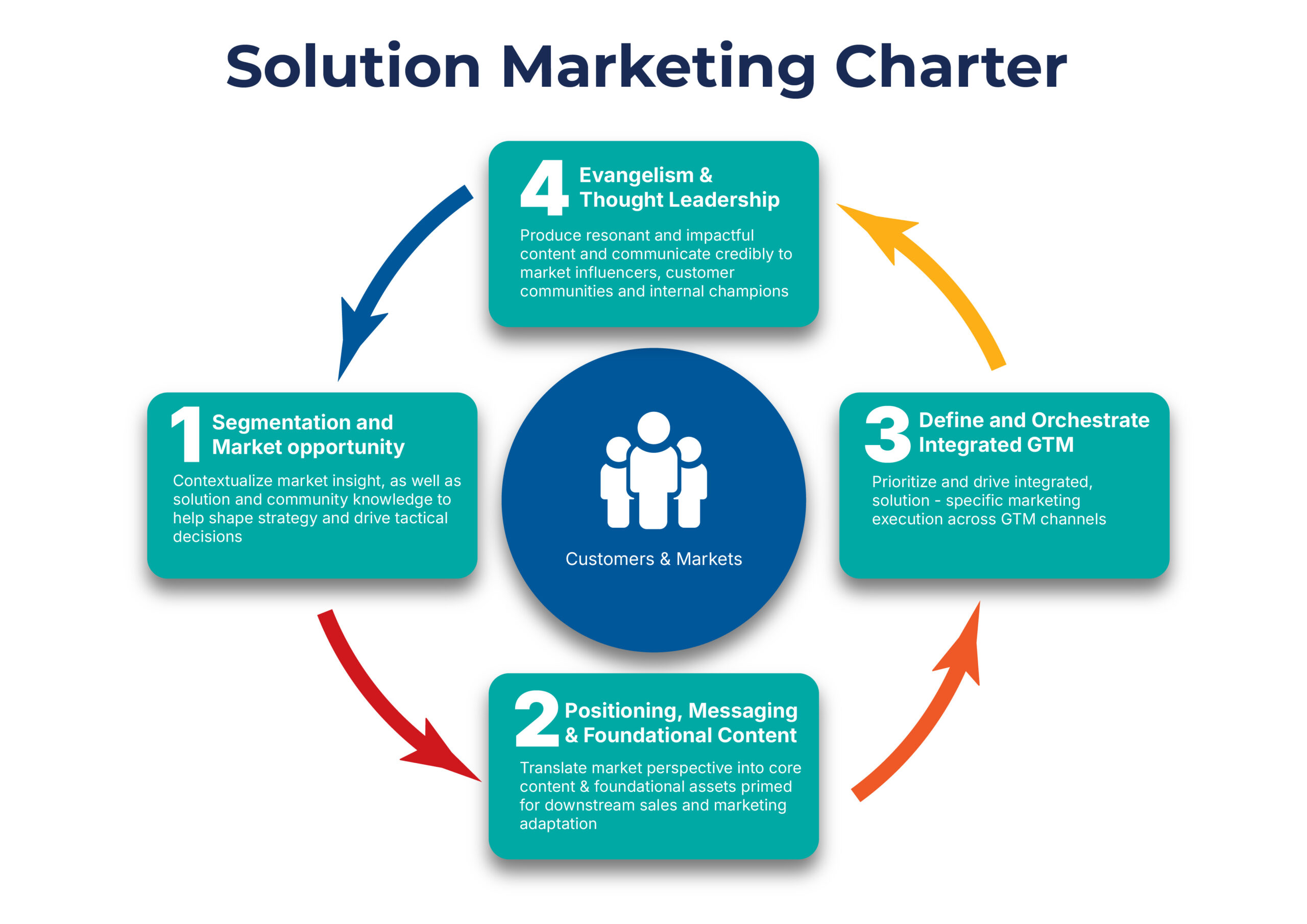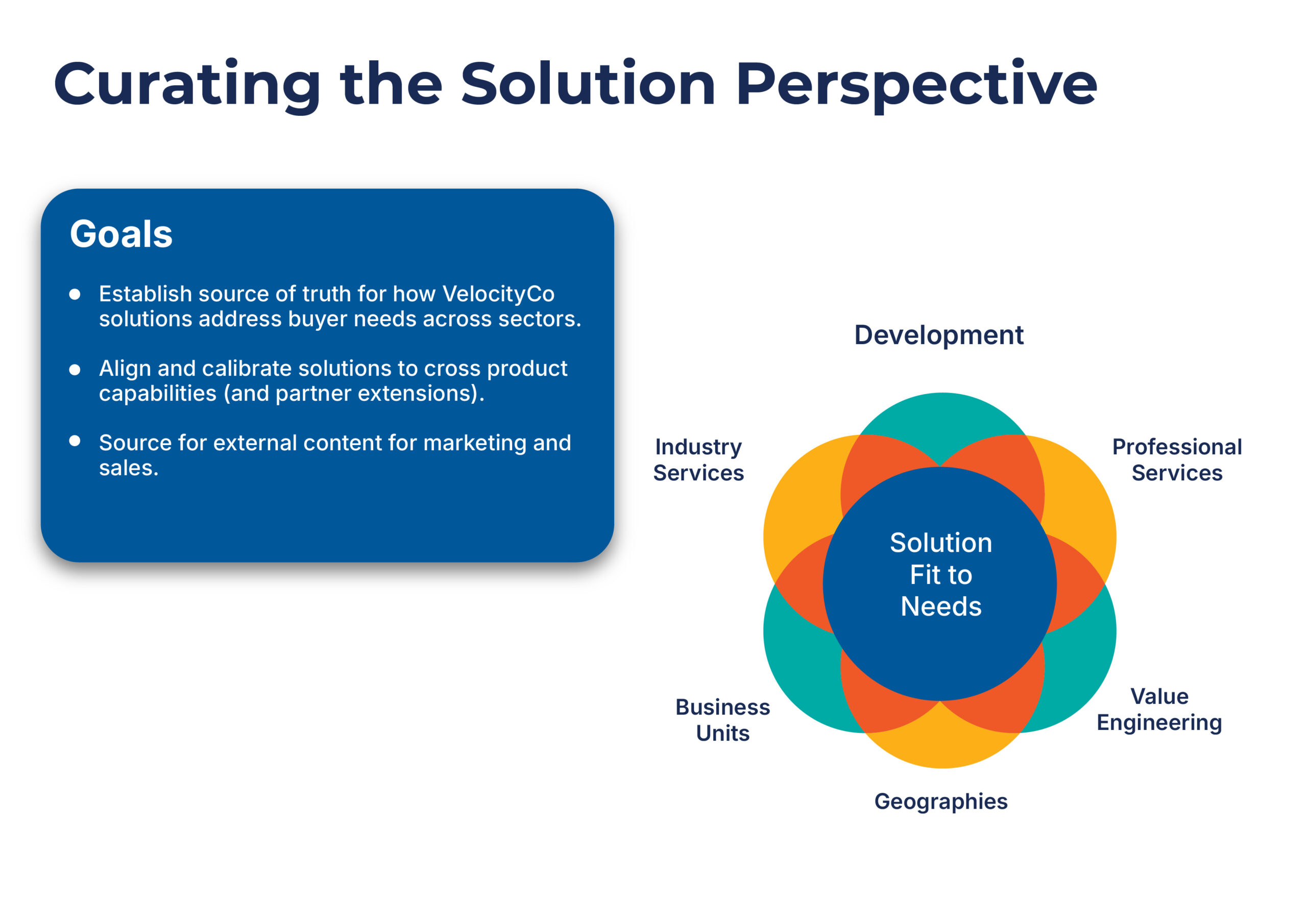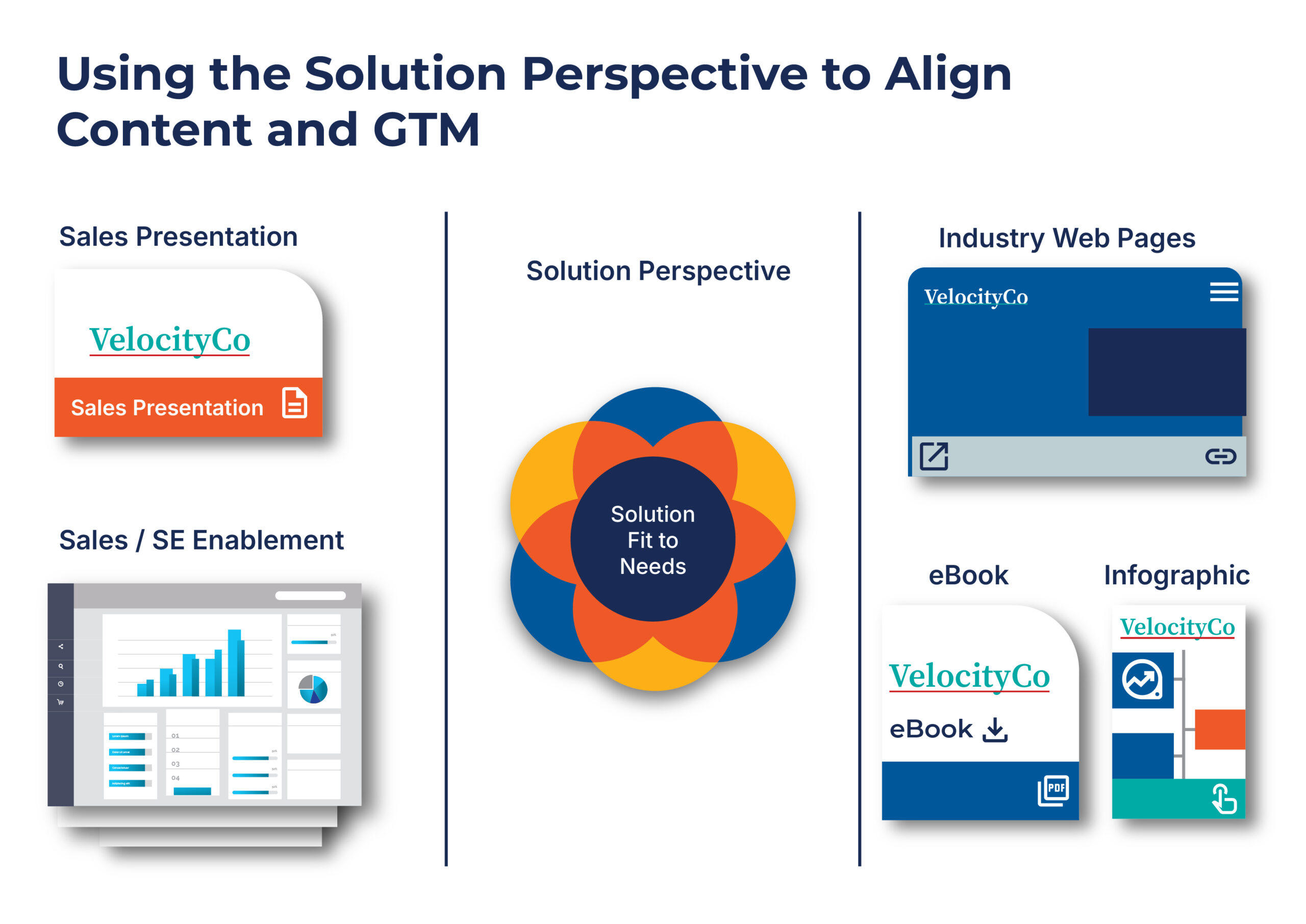Business leaders across industries continue to tell us, “I want to adopt a solutions-led marketing strategy.” Then, naturally, they want to know, “But how can I make this solutions approach work in my organization?”
Knowing the method for delivering impactful content that fuels pipeline, revenue and enablement is one thing. But figuring out how to implement this approach across siloed teams remains a challenge. To succeed, you must lead with clarity, empathy, and structure. The following eight steps will help you move your organization towards a solutions-led marketing approach.
1. START WITH A SHARED VISION — AND SECURE EXECUTIVE BUY-IN
Before driving change, leaders must understand the current state of the organization. Assess how marketing, product and sales teams operate within their discipline and collaborative — where processes align and where they diverge. At this stage, establishing cross-functional relationships is critical. Equally important you must clearly articulate how the shift to solutions-led marketing can drive meaningful gains for everyone in the organization.
By demonstrating the value of this approach to each function — how it elevates their work and supports business growth — you can rally teams around a common purpose for cross-team alignment. This is classic change management, grounded in empathy and anchored in collaboration with subject matter experts.
Key capabilities also required:
- Product expertise
- Ability to translate product and service bundles into buyer-ready solutions
- Understanding of the sales cycle and buying behavior
2. DEFINE THE ROLE OF SOLUTION MARKETING
Establish a formal charter that outlines the focus, responsibilities and impact of the solution marketing function. This is not about owning every go-to-market (GTM) motion — it is about creating clarity, as this example solution marketing charter illustrates:
Adapt this charter to your current business context. In some organizations, solution marketing may eventually orchestrate integrated GTM execution with the experts who understand the market, buyers and solutions you offer. If that is not your current reality, do not force it — but keep it as a north star.
A strong charter helps:
- Set boundaries and expectations
- Clarify cross-functional roles
- Elevate the strategic role of marketing
3. EMBRACE THE ROLE OF CONTENT CURATOR
In many businesses, no one team owns the organization’s full story. Instead, marketing must act as a curator — gathering multiple points of view and insights from product, sales, industry and partner teams to shape a unified narrative.
This requires humility and strong facilitation. You must have a willingness to accept strong feedback and to work across the community in order to create something useful for the entire go-to-market team. It also means creating lean content supply chains that scale — starting with a master asset (like a Solution Perspective document) and generating derivative content to support sales and enablement.
We recommend visualizing the approach of working with myriad stakeholders to create a common understanding of buyer needs, how your solutions uniquely address them and the value that delivers.


4. LAUNCH A PILOT WITH EXECUTIVE SUPPORT
Once you have secured support from key stakeholders, select a specific initiative to pilot to prove the end-to-end approach. For example, it could be a solution launch, value messaging transformation or an account-based marketing / sales initiative. Enlist executive sponsors to co-own the kickoff, framing the rationale, scope and success metrics. Use the kickoff meeting to inspire engagement and establish momentum for the approach.
Work to:
- Make roles and expectations clear
- Celebrate early wins
- Communicate consistently
5. PRACTICE RADICAL TRANSPARENCY
Transparency builds trust — especially in cross-functional efforts and in creating and tracking progress toward shared goals. After you have kicked off the pilot, hold regular check-ins to share progress, address issues and concerns, and reinforce expectations. Encourage open dialogue at these meetings. This creates accountability and alignment and helps prevent friction before it derails the effort.
6. LEAD WITH EMPATHY, STAY HUMBLE
Stakeholder alignment is a recurring effort, not a one-time task. Be willing to adapt. Small gestures can go a long way toward building trust. For example, one team I led involved myriad stakeholders with divergent opinions. In one of the early stakeholder meetings, I gave folks the chance to share their perspectives, both positive and negative about how things were progressing. One stakeholder had a fundamental concern with the name of the Solution Perspective document. I listened, acknowledged the concerns and on the spot decided to change the document name to suit the situation. This act sounds simple, but it diffused the situation and gained trust, which is vital to get people moving in the same direction.
Likewise, you need a village to establish a unified perspective in an organization on buyer needs, solutions and the value they deliver. You must put yourself into the shoes of the different stakeholders and respect differing points of view, their area of ownership and their responsibility. That empathy thing again goes a long way.
Put it into practice:
- Ensure that all voices are heard in both input and review phases
- Give product, industry and sales experts ownership of the story where it makes sense
- Avoid reinventing assets like “marketecture” diagrams without everyone’s input
7. BRING SALES AND SOLUTION ENGINEERS INTO THE FOLD
To win support from sales leaders, which is crucial to this process, demonstrate how solutions-led marketing enhances the buying journey. Partner closely with solution engineers — they live in the details and have a finely tuned sense for what works (and what does not) with buyers. Earning their trust is critical.
8. VISUALIZE SUCCESS — AND WORK BACKWARDS
Every organization is different. As such, every marketing leader will apply these steps depending on their unique context differently. But one thing is true across the board: Change takes time.
To manage your organization’s transformation, define success in tangible, inspiring terms, and share a vision your teams can rally around.
Try writing headlines that represent what major accomplishments look and feel like across different timeframes, such as:
- “We created a unified view of our solutions for the healthcare vertical in 3 weeks!”
- “All marketing and sales content delivered for manufacturing in just 45 days!”
- “We reactivated $40 million in pipeline from dormant accounts within 90 days!”
LEAD THE CHANGE, DO NOT JUST SUPPORT IT
Transforming how your organization goes to market is not just a marketing initiative — it is a leadership opportunity. Driving a solutions-led approach requires vision, influence and a deep understanding of your business and buyers.
If you are navigating this change and looking for a partner in the process, we would be happy to share what has worked for us — and help you shape a strategy that works for you. Schedule a 30-minute consultation with one of our revenue experts today.
